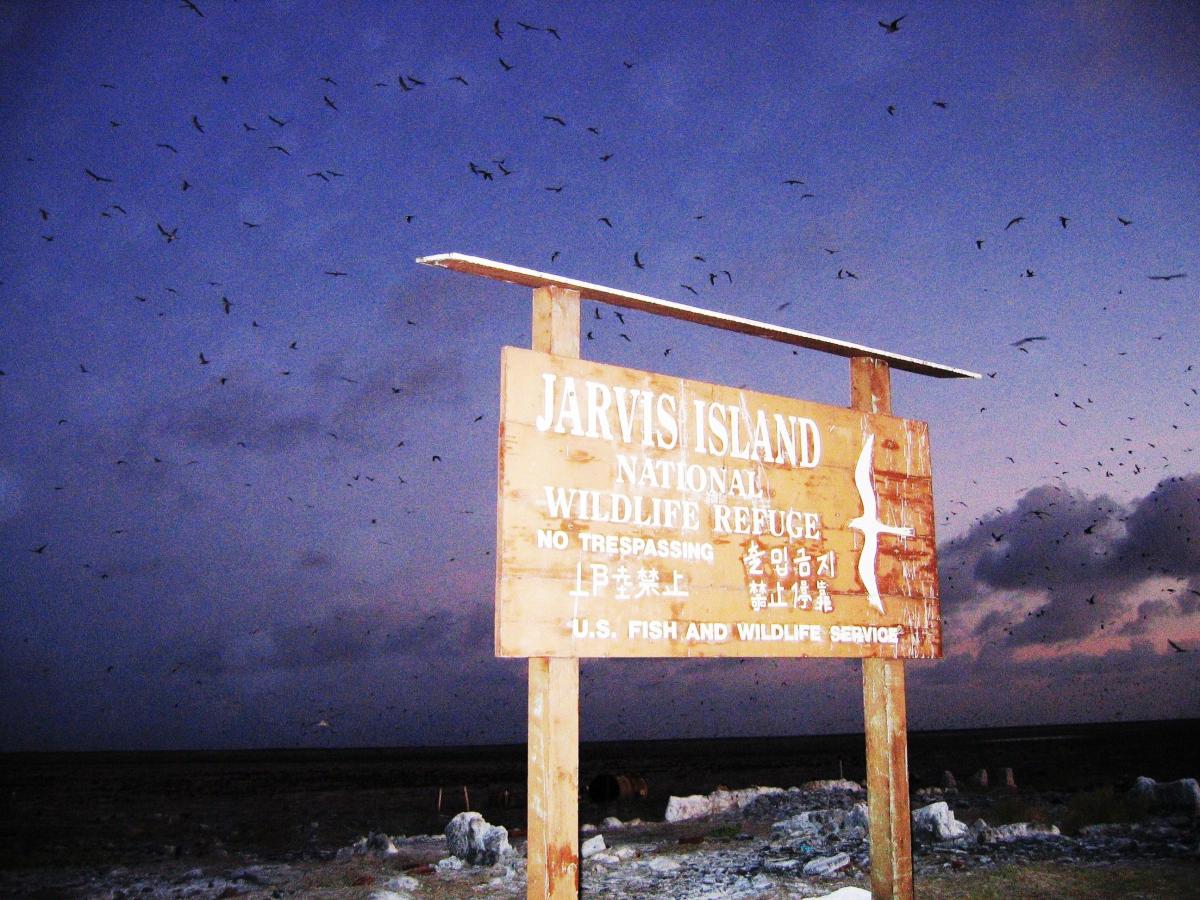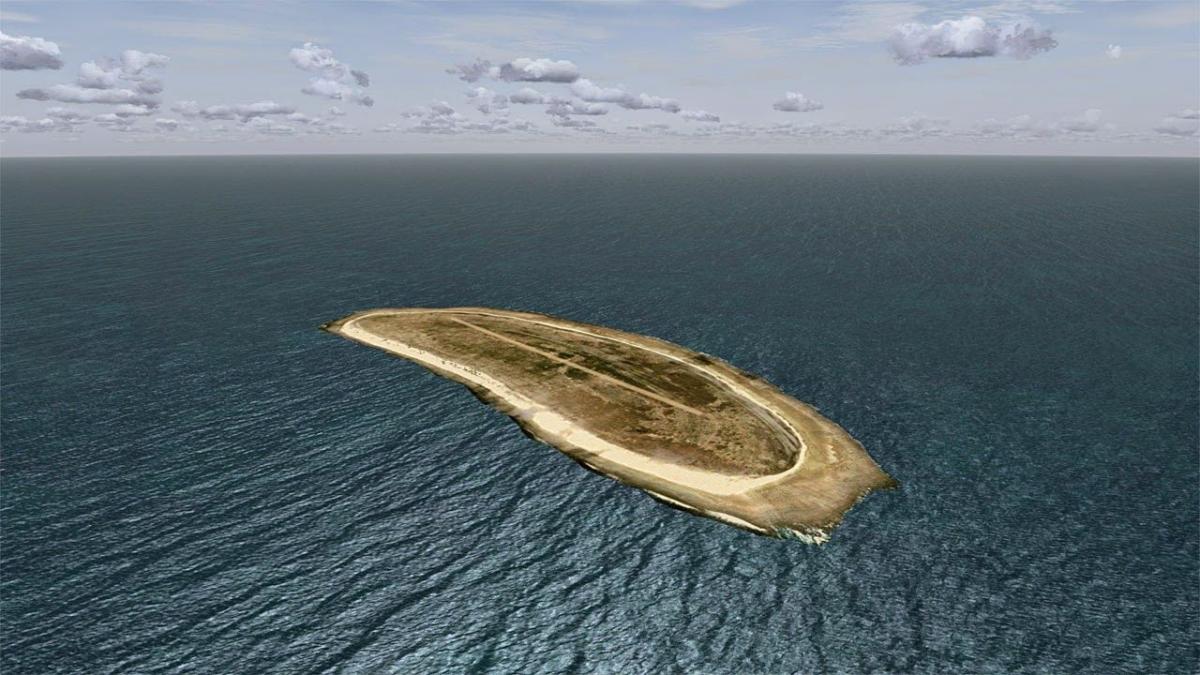N5J Team will be active from Jarvis Island, IOTA OC - 081, 7 - 19 August 2024.
Team on Island - AA7JV, N1DG, HA7RY, KN4EEI, KO8SCA.
Recent DX Spots N5J
N5J Log search N5J Remote operators CW:
W1VE, CT1BOH, CT1ILT, KL9A, N6MJ, KL2A, K5GO/ZF9CW, M0DXR, KL7SB, JE1CKA, JN1THL, SM6LRR, F6AKK, E77DX, CE3CT, VE5MX, ZL3CW, HA2NA.
They will operate on 160 - 6m, CW, SSB, FT8.
DXCC Country - Jarvis and Palmyra.
N5J Jarvis Island News 4 August 2024
The Magnet, with the N5J team and three USFWS scientists on board, got under way at 0500 AM from American Samoa for Jarvis island. The time required to cover the distance of 1050 Nautical Miles (1940 km) depends on the boat-speed that we are able to maintian. Currently we are cruising at 15 knots (27 kmph) in light winds and moderate seas (waves of 3 to 5 feet). According to the forecast this favorable weather should continue for the next three days. Although we are likely to encounter some opposing currents, we expect to arrive at Jarvis the morning of August 6. If for some reason we need to slow down, we will time our arrival for the morning of the 7th.
AA7JV/N5J Team.
N5J Jarvis Island News 9 May 2024
Joe, W8GEX and I have been working with Don, N1DG, to get the league to recognize Jarvis Island as a new and separate DXCC Entity. There is ample justification for it. Don has presented to the DX committee and so far the reception has been lukewarm at best. We felt that a "grass roots" approach could be effective.
Below is text that you can copy and paste into an email and send off to your Director, the Section manager, the President of the ARRL, Rick Roderick (K5UR) and the DXAC Chairman, K2CS.
If you feel so compelled, please send this off right away.
N5J Jarvis Island News 21 April 2024
Press Release nr. 4
Jarvis Island N5J DXpedition
April 21, 2024
Since the Dateline DX Association announced plans for activating Jarvis Island this summer many have asked if we could arrange with IOTA and POTA program organizers to secure approval of our DXpedition.
Jarvis is one of the rarest of the IOTA counters, having been off the air for 34 years. It is needed by 82% of IOTA program participants.
Because of the requirements set by the permit of the USFWS, while the stations and antennas and power are all set up on Jarvis Island, the local operators must conduct the DXpedition from the MV Magnet which will still be in the Jarvis Island National Wildlife Refuge just offshore.
Both the IOTA and POTA programs have agreed to recognize QSOs made by the local operators but will not allow QSOs made by internet remote operators to count. Therefore QSOs made by AA7JV, HA7RY, N1DG, KO8SCA and KN4EEI will count for the awards. Daily uploads by the N5J team to clublog will identify the operators. Additionally at the beginning of each operator shift the team will endeavor to post on the cluster the callsign of the operator so chasers have some real time notice. At this time all phone operations are expected to be by the at Island team as well giving that mode 100% IOTA/POTA certaintly.
In addition to the five operators mentioned above, there is an experienced team of 24 operators from 8 countries operating up to 6 stations around the clock ensuring DXers around the globe have ample opportunity to add an ATNO or band fill to their DXCC totals.
N5J Team.
N5J Jarvis Island News 17 April 2024
The Dateline DX Association is pleased to announce that due to the increasing interest in our DXpedition to this rare DXCC entity we are adding another local operator to our team.
Please welcome KO8SCA, Adrian Ciuperca, to our at-island team. A well known and experienced DXpeditioner, Adrian works as an IT consultant, a much needed component to any remote operation. He is a newly inducted member of the CQ DX Hall of Fame and a YASME award of Excellence winner.
Adrian is a keen DXer with DXCC 318, 9BDXCC, IOTA, as well as being a passionate contester. He competed in WRTC 2018 in Wittenberg, Germany as well as at the 2023 edition of WRTC in Bologna, Italy.
Adrian has taken part in over 30 DXpeditions to destinations including W8S Swains Island, 3Y0J Bouvet Island, J2, Z6, OJ0, VP2V, PJ2, PJ4, A5, ZK3, V8, TX0M/TX0A, 6O, 9M0, FJ, FM, J3, J8, VK9C, VK9X, VP5, VP9, and Z2. Recently he has been a guest operator at 4U1UN and HV0A
His preferred operating mode is CW, but he is also active in SSB and digital modes. Adrian is a member of several amateur radio DX and contesting clubs, namely, NCDXF, INDEXA (board director), YCCC, FOC, CWOPS, LIDXA, Order of Boiled Owls of New York, LICWC, NYCDXA, WECA, Araucária DX Group, RRC.
George, AA7JV, and Don, N1DG, for the N5J team.
N5J Jarvis Island News 8 April 2024
KH5 - Palmyra and Jarvis Islands
It is 84 days to our departure for Jarvis Island from American Samoa. We are busy building and testing equipment. In addition to the RIB-s, a lot of our gear is built by us, specifically designed for remote operation where reliability is key.
We have finalized the station configuration. We will have six stations on the island. Four of the station are set up to be remotely operated and two will be locally operated, although we do have the flexibility to operated any station locally (from the boat) or remotely via Starlnk and the Internet
N5J Team.
Jarvis Island
Jarvis is an island in the central Pacific Ocean. The status of Jarvis Island is an unincorporated unorganized territory of the United States (formally not part of the United States, but a possession of the United States).
General information about Jarvis Island
Jarvis Island is located 2,200 kilometers south of Hawaii, and 375 kilometers southwest of Christmas Island, which belongs to Kiribati.
Jarvis Island belongs to the Line Islands. Jarvis Island is uninhabited. The island is home to the abandoned village of Millersville.
It has a total area of 4.45 km². Jarvis is a sandy coral island. The coastline is 8 kilometres long. The maximum height is 7 metres. There are no natural water sources. Growing: low shrubbery, stilted plants, sparse grass cover. Various species of seabirds nest.

Discovery and development of the island
Jarvis Island was discovered by the British in 1821.
From 1858 to 1879 it was under the control of the United States.
In 1889 Jarvis Island came under the control of Great Britain, which did not develop it.
In 1935, Jarvis Island came under US control again. There has been no economic activity on Jarvis Island to date. There are external anchorages for marine vessels on the island, as well as two mooring sites for large boats.
Jarvis Island is administered by the U.S. Department of the Interior, which manages the island under the National Wildlife Refuge Program.


